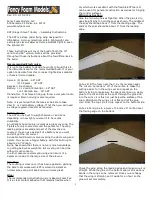
LS7 Pilot notes
Page 9 of 10
5
WATER BALLAST SYSTEM
5.1
Filling Sequence
Fill in the following sequence
A. Tail tank
B. Left Wing
C. Right Wing
5.2
OPEN" water dump valve - shift cockpit dump lever to the rearward
position. If the tail-fin tank is to be used, fill this tank first.
5.3
Connect tail-fin tank tube and funnel to tail-fin tank dump valve.
A. Move rudder left or right, observe valve with opening below rudder).
B. Place "Funnel" at the top of the rudder.
5.4
Fill tail-fin tank to the required amount, refer Loading Chart. Markings on
the translucent right rudder gap seal tape = 0.5 Litre each.
5.5
Use water level in fill tube to fill to the desired amount. The
upper RED
marking correspond to maximum amount.
5.6
"CLOSE" water dump valve
– shift cockpit dump lever to forward position.
Remove tube and funnel from tail-fin dump valve.
5.7
To Fill Left Wing bag
A. Open "left" wing dump valve through Baggage Compartment.
B. Suck residual air from the left wing bag - close dump valve before
stopping sucking
– using hose connected to the under-wing dump
valve.
C. When air is removed, lay the left wing down,
open dump valve
and
supply ½ total wing water ballast via funnel, held
maximum
1 metre
above the wing.
D. Close "left" wing dump valve and remove tube and funnel.
5.8
To Fill Right Wing bag
A. Open "right" wing dump valve through Baggage Compartment.
B. Suck residual air from the right wing bag - close dump valve before
stopping sucking
– using hose connected to the under-wing dump
valve.
C. .When air is removed, lay the right wing down,
open dump valve
and
supply
the other ½
of total water ballast amount via funnel, held
maximum
1 metre above the wing.
D. Close "right" wing dump valve and remove tube and funnel.
5.9
Warnings
A. Unequal water ballast amounts may promote ground-looping.
B. Check for proper water dump operation
– Tail-fin dump
must
open
before wing dump valves to prevent rearward movement of C of G.




























